High-temperature tribological behaviors of a Cr-Si co-alloyed layer on TA15 alloy
2017-11-20LuHaifengMiaoQiangLiangWenpingWangFangDingZhengXiaJinjiao
Lu Haifeng,Miao Qiang,Liang Wenping,Wang Fang,Ding Zheng,Xia Jinjiao
College of Material Science and Technology,Nanjing University of Aeronautics and Astronautics,Nanjing 210016,China
High-temperature tribological behaviors of a Cr-Si co-alloyed layer on TA15 alloy
Lu Haifeng,Miao Qiang*,Liang Wenping,Wang Fang,Ding Zheng,Xia Jinjiao
College of Material Science and Technology,Nanjing University of Aeronautics and Astronautics,Nanjing 210016,China
Cr-Si layer;High temperature;TA15 alloy;Tribological behavior;Wear mechanism
A Cr-Si co-alloyed layer was successfully deposited on TA15 alloy by the double glow plasma surface technology to improve its poor wear resistance at elevated temperature.The microstructure,composition,and phase structure of the layer were investigated by SEM,EDS,and XRD.The tribological behaviors of the Cr-Si co-alloyed layer at 20℃ and 500℃ were analyzed in details.The results indicated that the friction coefficient and wear rate of the Cr-Si coalloyed layer at 20℃ and 500℃ were much lower than those of the substrate,which was due to higher hardness and superior elastic modulus.This layer may become an approach to effectively improving the wear resistance of TA15 alloy at elevated temperature.
1.Introduction
TA15 alloy,a type of near-alpha titanium alloy,has been considered as a candidate material to manufacture airplane bulkheads and wallboards,due to its high specific strength,good corrosion resistance and creep resistance.1–3However,a further exploitation of this alloy is somewhat limited by some unsatisfactory characteristics,for example,poor wear resistance at elevated temperature(about 500℃)which is also the application temperature of the aforementioned components.4–6Numerous surface modification technologies have been applied in titanium alloys to improve the shortcomings in recent decades,such as laser cladding,magnetron sputtering,and so on.7–9The double glow plasma surface technology is also one kind of surface modification process for materials,which can form a high-quality layer with high hardness,excellent wear resistance,and strong bonding between a layer and a substrate.10–14
The double glow plasma surface technology is a novel surface metallurgical technique in recent 30 years,and is also known as Xu-Tec in Western countries.A great deal of theoretical and practical achievements has confirmed that the doubleglow plasmasurfacetechnologyhasmanyunique advantages such as high deposition rate and large glow cover area.In addition,it is worth noting that the presence of hydrogen brittleness can be effectively avoided so as to improve greatly the quality of deposition layers.15–18
However,very few papers have reported applying a layer on the surface of TA15 alloy as an effective way to improve wear resistance at elevated temperature.It is well known that transition metal silicides(Cr3Si,CrSi,Cr5Si2,etc.)have significant advantages,such as high melting points,high hardness,and excellent high-temperature mechanical properties.19–22Therefore,it is rational to deduce that a silicide layer can improve the poor wear resistance of titanium alloy.Thus,in this paper,a Cr-Si co-alloyed layer was prepared on the surface of TA15 alloy by the double glow plasma surface metallurgical technology in two steps consisting of chromizing and siliconing.Then its high-temperature tribological behavior was investigated in detail.
2.Experimental
2.1.Material preparation
Specimens were cut into flakes with a size of 15 mm×15 mm×4 mm.Before the layer preparation process,all specimens were mechanically polished by a metallographic procedure.After that,the polished samples were ultrasonically cleaned with ethanol,and finally blow-dried.
The sputtering target of a chromium plate(£100 mm×5 mm)with a purity of 99.9%was prepared by powder metallurgy,while a silicon crystal(£100 mm×5 mm)with a purity of 99.9%by casting,both of which were used as the source electrodes to supply alloying elements.
2.2.Experimental methods
An experiment was conducted by using the double glow plasma surface alloying technique,and the parameters are listed in Table 2.The micro-structure,composition distribution,and phase structure of the Cr-Si layer were analyzed by scanning electronic microscopy(SEM),energy dispersive spectroscopy(EDS),and X-ray diffraction(XRD).The microhardness of the layer was examined by a Vickers Indenter with an applied load of 100 g and time for 15 s.A nanoindentation test was carried out on the surface of the Cr-Si co-alloyed layer by a Shimadzu Dynamic Micro-hardness System(DUHW201/W201S,Japan)to measure the nanohardness and elastic modulus with 100 mN for the load and 10 s for the holding time during the test.A scratch test was used to determine the bonding strength between the layer and the substrate measured by a WS-2005 Scratch Tester.The parameters of the test were set as 100 N for the loading force,20 N/min for the loading rate,and 2 mm/min for the sliding speed.

Table 2 Parameters of double glow plasma.
Sliding friction and wear tests were carried out to investigate the tribological behaviors of the Cr-Si co-alloyed layer and the substrate by using an HT-500 ball-on-disk friction weartesting machinein airwith relativehumidity of(45±5)%under a dry sliding condition.The tests were conducted at 20℃ and 500℃.During the friction process,the specimens were sliding against a Si3N4ball of 5 mm in diameter and the normal load was 330 g with a turning radius of 2 mm.The sliding speed of the counterpart ball was 840 r/min lasting for 30 min.Variations in the coefficient of friction were recorded during the sliding process.The scar morphologies and chemical composition were examined by SEM and EDS.A super depth-of-field 3D system(Micro XAM,ADE Company)was used to measure the widths and depths of wear tracks.
3.Results and discussion
3.1.Microstructures and phases
Fig.1 shows the microstructure and EDS composition of the Cr-Si layer.From Fig.1(a),it can be seen that the compact and uniform Cr-Si co-alloyed layer was mainly composed of spherical particles of various sizes without obvious holes and cracks.Combined with Fig.1(b),the compositions of the deposited layer were a majority of Si and Cr with 52.23 and 29.45at.%as well as a minimal content of 16.27 at.%Ti.The presence of Ti atoms on the surface of the Cr-Si coalloyed layer was attributed to their outward diffusion from the substrate.
The presented cross-sectional SEM image and composition distribution of the layer are showed in Fig.2.Fig.2(a)shows that there were three distinct zones from the surface layer(region A)to the substrate(region B),which were all homogenous and well bonded with adjacent zones.Combined with the elemental compositions shown in Fig.2(b),it is clearly concluded that the total depth of the layer is about 40 lm,consisted of a Si deposited layer(Zone I)with 10 lm in thickness,a Si-Cr diffused layer(Zone II)with 16 lm,and a Cr-Ti diffused layer(Zone III)with 14 lm.In addition,it should be mentioned that a distinctive interface was observed between the substrate and the Cr layer.The EDS result reflects that the main elements were Ti and Cr,which is shown in Fig.2(c).Therefore,we could deduce that the element Cr diffused inwardly,while the element Ti diffused outwardly in the preparation of the Cr-Si co-alloyed layer.With the extension of deposition time,Cr and Ti elements combined together and formed a Cr-Ti intermetallic compound transition layer,which could improve the hardness and enhance the bonding strength between the substrate and the layer.

Table 1 Chemical composition of TA15 alloy.
Fig.3 shows the XRD pattern of the Cr-Si layer.In the outer layer,intermetallic compounds Cr5Si3,Cr3Si,and TiSi2are identified.The XRD result represents that the Cr-Si co-alloyed layer deposited on the surface of TA15 alloy is a mixture of crystalline phases,which corresponds to the EDS analysis.
本文在写法上跟《童年的味道》有异曲同工之妙,小朋友们可以自行比较、学习。小朋友们还可以想一想:小作者的童年跟她爸爸的童年有什么不一样?

Fig.1 Surface microstructure and EDS results of the Cr-Si layer.

Fig.2 Cross-sectional SEM morphology and EDS results.
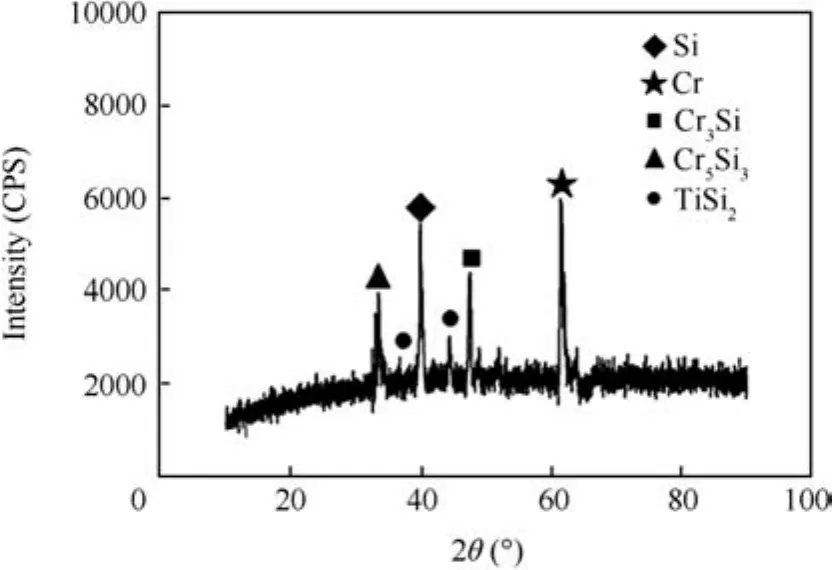
Fig.3 XRD pattern of the Cr-Si layer.
3.2.Mechanical behaviors
The distribution profile of micro-hardness is illustrated in Fig.4.It can be seen that Zone I possessed the maximum hardness of approximately 1020 HV0.1.The relatively higher hardness of the layer compared to the original hardness of TA15 alloy(400 HV0.1)may be attributed to the deposited Si and mixed intermetallic compounds.With the depth increasing,hardness decreases gradually in Zone II and rapidly in Zone III,which correspond to the EDS results mentioned above.Therefore,the difference between separate zones is dominated by the variation ofmicrostructure and concentration distribution.
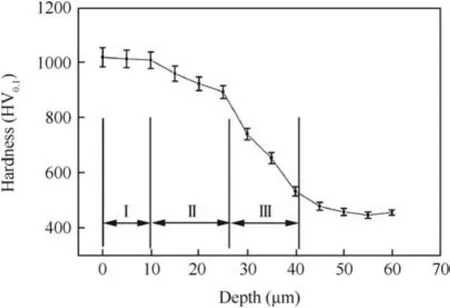
Fig.4 Micro-hardness along the cross-sectional surface of the Cr-Si layer.
Fig.5(a)is the indentation force-depth curve of the substrate and the Cr-Si co-alloyed layer.This test method must ensure that the depth of indentation is much smaller than the thickness of the layer in order to reflect the actual hardness.As is known to all,the smaller an indentation depth is,the harder a layer is.It can be seen from the curve that a smaller indentation depth appears in the Cr-Si layer which indicates a higher hardness of the outmost Si deposited layer.The Cr-Si layer has a smaller indentation depth(0.35 mm)than that of the substrate(0.90 mm)due to the high hardness of the Si deposited layer.Bolshakov et al.have reported that the ratio of the final indentation depth to the depth at peak load,hf/hm,is a useful indicator of pile-up or sink-in deformation characteristics around the indenter.23The pile-up behavior at the indentation is the most important plastic phenomenon,and the pile-up is high ifhf/hmequals 1,and very low ifhf/hmis less than 0.7.As can be seen,thehf/hmvalue of the Cr-Si co-alloyed layer is less than 0.7 while that of the Cr layer is close to 1.0.Therefore,as the indentation continues,plastic deformation barely occurs on the surface of the Cr-Si co-alloyed layer.
The nanoindentation hardness and elastic modulus of the Cr-Si co-alloyed layer and the substrate are shown in Fig.5(b).It can be seen that the hardness(H)and elastic modulus(E)of the Cr-Si co-alloyed layer reach 16,306 MPa and 519 GPa,respectively,much higher than those of TA15 alloy(3750 MPa and 216 GPa).The results are consistent with the above analysis.Besides,HigherH/EandH3/E2ratios mean greater resistance to plastic deformation and crack propagation under different loads.The ratios ofH/EandH3/E2of the Cr-Si co-alloyed layer are 0.031 and 16.1 MPa,respectively,while those of the TA15 alloy are 0.017 and 1.1 MPa,respectively.The results mean that the Cr-Si co-alloyed layer has a better wear resistance than that of the substrate.
The bonding between the Cr-Si co-alloyed layer and the substrate was measured by a scratch test detector,as shown in Fig.6.WhenLc(the critical load)=52 N,a strong acoustic emission signal peak appears suddenly when the load reaches 52 N,reflecting that the layer begins to fracture and the load is so-called critical load.When the load exceeds 60 N,strong acoustic emission signal peaks appear continuously.In this process,the Cr-Si co-alloyed layer fractures completely and is worn out by diamond,producing deep furrows.The results show that the bonding strength between the Cr-Si co-alloyed layer and the substrate is about 52 N,reflecting the ideal metallurgical combination.24Fig.6(b)shows the integral scratch image.It can be seen from the morphology that the Cr-Si co-alloyed layer is slowly worn out and the scratch becomes wider and wider gradually,producing silvery furrows.Fig.6(c)shows the scratch image of the 40–60 N stage,and it can be seen that the furrows are very wide and deep.At the end of the scratch test,the peeling phenomenon has not taken place.The strong bonding strength provides a guarantee of good wear resistance.

Fig.5 Indentation force-depth curve and elastic modulus of TA15 and the Cr-Si layer.

Fig.6 Scratch morphology of the Cr-Si layer.
3.3.Tribological behavior
3.3.1.Friction coefficient profiles

3.3.2.Friction mechanisms
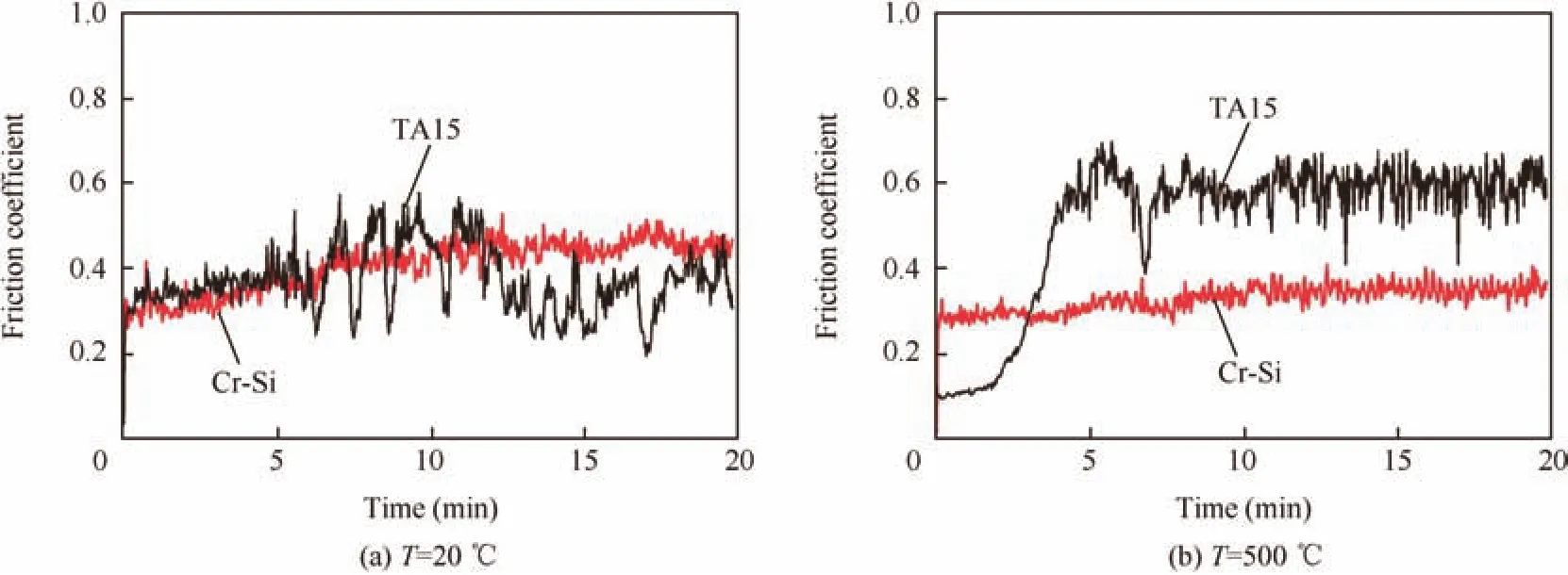
Fig.7 Friction coefficient profiles of TA15 and the Cr-Si layer at different temperatures.
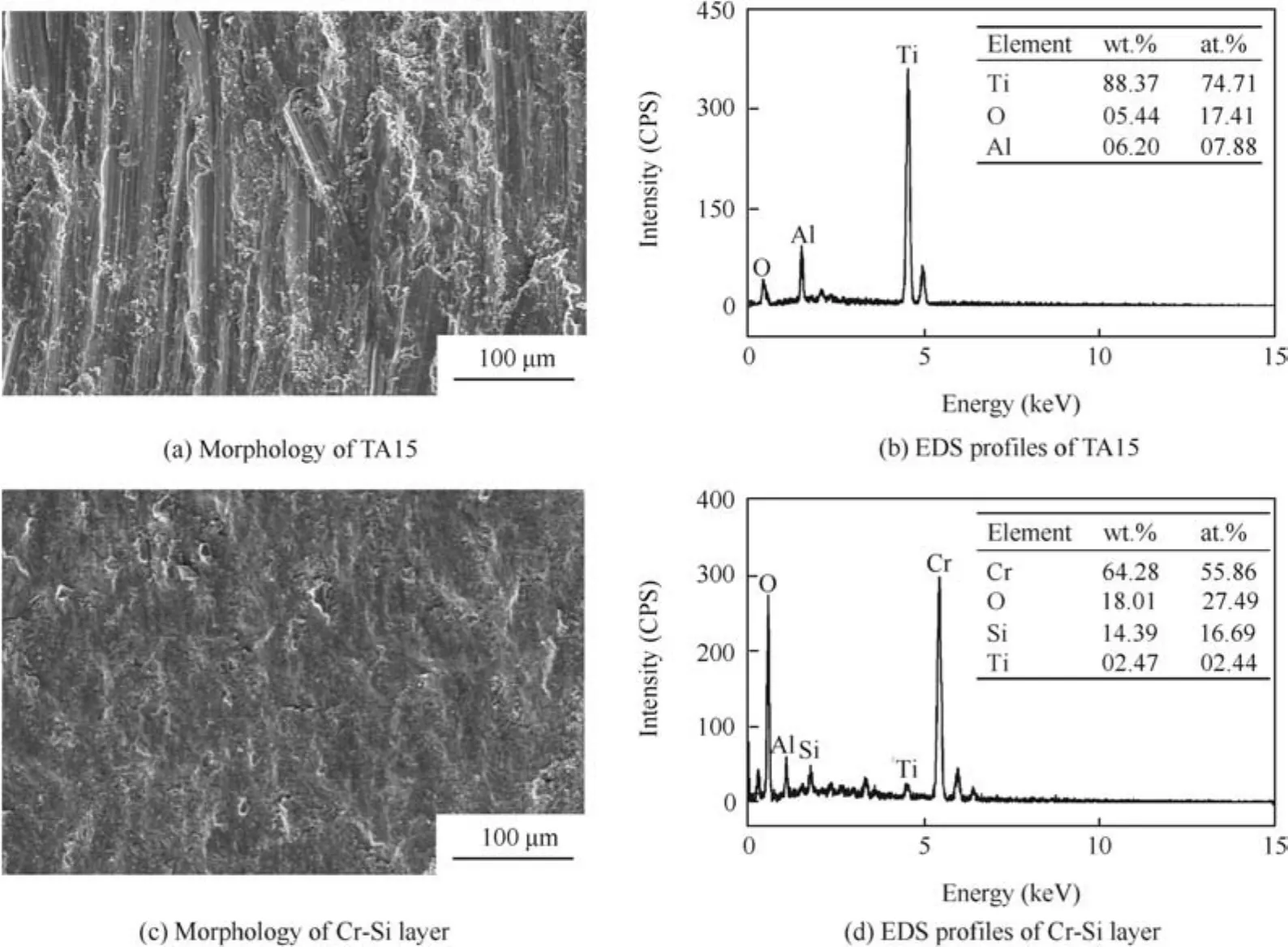
Fig.8 Wear morphology and EDS pro files of the wear tracks at

Fig.9 shows the wear morphology and EDS results of the wear track developed at 500℃.It can be seen from the morphology in Fig.9(a)that there are plenty of wear debris and broad furrows on the surface of the substrate.The phenomenon reflects that abrasion wear has taken place.In comparison,it can be seen from Fig.9(c)that many scratches and a small amount of particles are observed on the wear scratch.The high hardness and strong bonding force make it difficult for the Cr-Si co-alloyed layer to deform and be peeled off the substrate.In addition,one general characteristic of metal silicides is superior hardness stability regardless of application temperature like intermetallic compounds. Therefore,although the friction process generates a lot of friction heat,softening would never happen,which provides protection for the substrate from wearing.29In Fig.9(b),it can be seen that the grinding crack of the substrate contains O and Ti,and oxidation wear has taken place seriously.In contrast,the layer mainly contains O,Si,Cr,and Ti,as shown in Fig.9(d).The existence of Ti shows that the layer has been worn through at high temperature.The results show that the main wear mechanisms of the substrate and the Cr-Si co-alloyed layer at 500℃ are both abrasion and oxidation wear.30–32Compared to the substrate,the wear of the layer is mild.In conclusion,the Cr-Si co-alloyed layer has good anti-wear and antifriction performances when it is exposed at elevated wear environments.

Fig.9 Wear morphology and EDS pro files of the wear tracks a

Fig.11 shows the worn surface of the Si3N4ball.Fig.11(a)is the SEM morphology of the ball when it slides against the substrate in different magnifications.It can be seen that lots of tiny particles are dispersed unevenly among the friction surface of the Si3N4ball with a few circle-like defects.The hackly and rough friction surface is mainly caused by the lack of oxides peeled off during the wear process.As shown in Fig.11(b),the worn surface of the counterpart is smooth after it slides against the Cr-Si layer.Because metal silicides have unique atomic bonding,consisting of covalent bond and metallic bond,the layer has high strength to resist plowing and scratching of the Si3N4ball.The much higher hardness of the layer degrades the plastic deformation so that a very small contact area could be maintained during the sliding process.
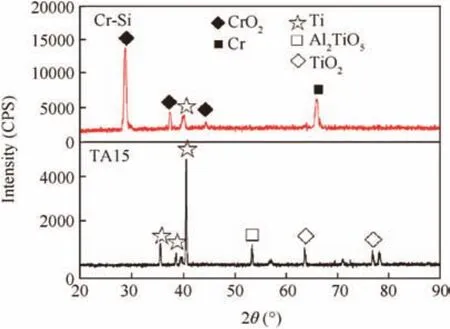
Fig.10 XRD patterns of the wear tracks of TA15 and the Cr-Si co-alloyed layer at
3.3.3.Friction and wear performance
To measure the friction and wear performances,the wear volume can be calculated as follows33:

whereVis the wear volume,mm3;bis the width of the wear track,mm;his the depth of the wear track,mm;ris the radium of the grinding ball,mm.
The wear rate is a true measure of wear resistance performance,which can be calculated as below34:



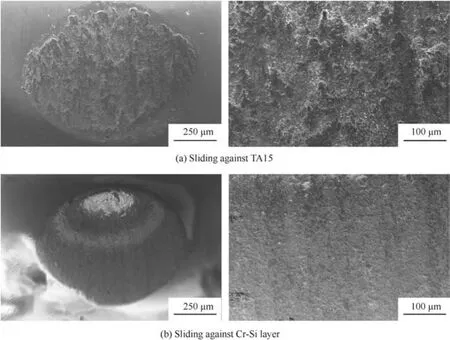
Fig.11 SEM morphology of the worn surfaces of Si3N4.

Fig.12 SEM image and 3D surface pro filometry of the wear tracks at
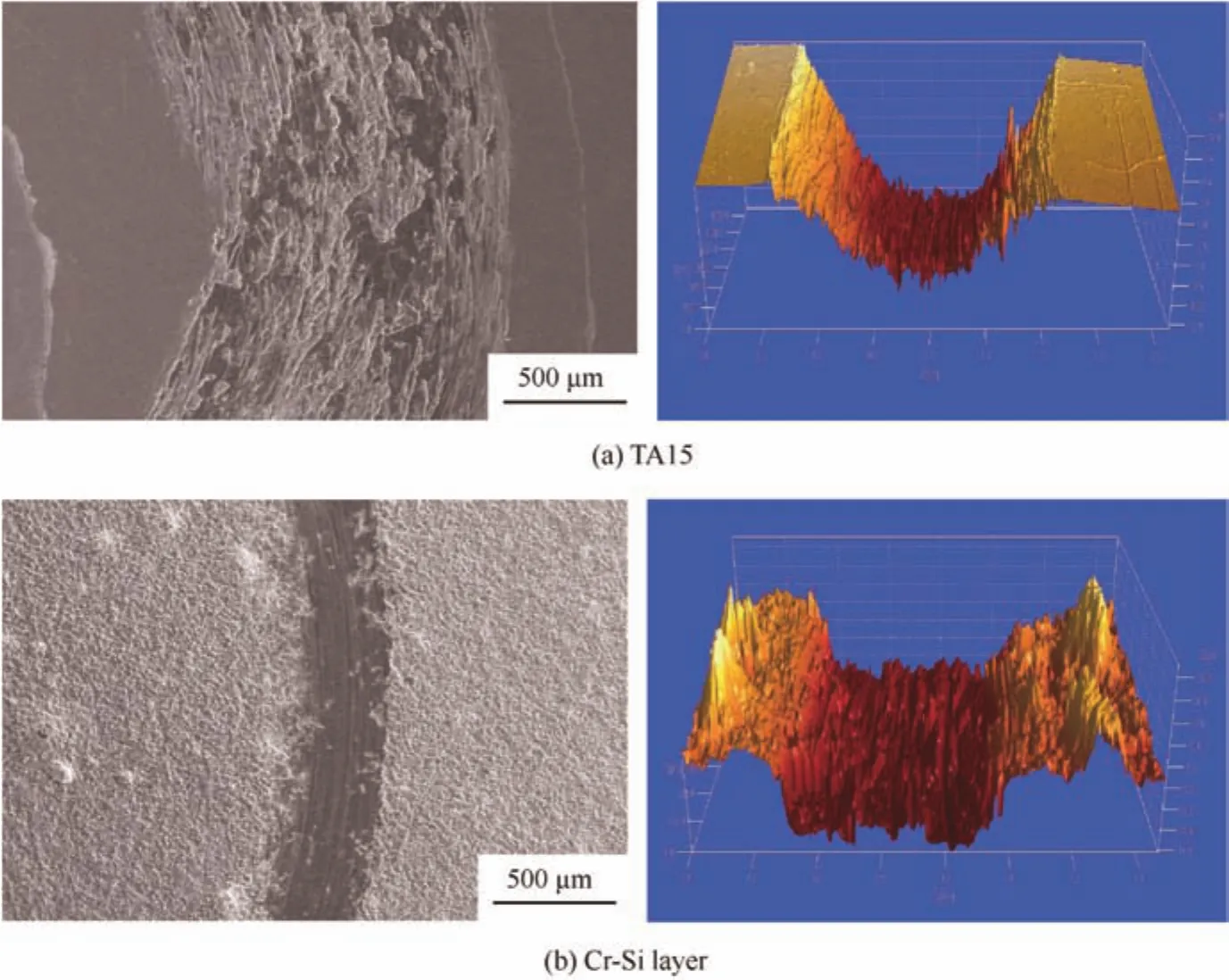
Fig.13 SEM image and 3D surface pro filometry of the wear tracks at
Table 3 Wear results of the Cr-Si layer and the substrate at

Table 3 Wear results of the Cr-Si layer and the substrate at
Sample Width b/mm Depth h/lm Volume loss V/mm3 Specific wear rate K/(10×5×mm3×N?1?m?1) Weight loss m/mg 20℃ Substrate 1.4 20 0.293 28.72 3.49 Cr-Si 0.7 12 0.088 21.21 0.79 500℃ Substrate 1.2 30 0.377 95.17 6.22 Cr-Si 0.8 14 0.117 28.29 0.91
4.Conclusions
(1)A Cr-Si co-alloyed layer was prepared on TA15 alloy by using the double glow plasma surface alloying technique.The layer is homogeneous and dense,and the total thickness is 40 lm.The layer system was composed of a Si deposited layer with 10 lm in thickness,a Si-Cr diffused layer with 16 lm,and a Cr-Ti diffused layer with 14 lm.
(2)The surface hardness of the layer reached 1020 HV0.1,which was much higher than that of the substrate.With the depth increasing,hardness decreased in gradient.In addition,the layer had a higher value of elastic modulus.The bonding strength between the layer and the substrate was about 52 N,representing the ideal metallurgical combination.
(3)The results of wear tests indicated that the friction coefficient of the Cr-Si co-alloyed layer was lower than that of the substrate at different temperatures.In addition,the wear amount and wear ratio of the substrate were much larger than those of the layer.At room temperature,the major wear mechanisms of the Cr-Si co-alloyed layer are oxidation and delamination wear,while abrasion and adhesion wear for the substrate.At high temperature,the main wear mechanisms of the substrate and the layer are both abrasion and oxidation wear.
(4)The metal silicides with high hardness and strong bonding force between atoms protect the layer from deforming during a wear process.Therefore,the Cr-Si coalloyed layershowsexcellentanti-wearand antifriction performances.
Acknowledgements
This project was supported by the National Natural Science Foundation of China(No.51474131)and a project funded by the Priority Academic Program Development of Jiangsu Higher Education Institutions.
Appendix A.Supplementary material
Supplementary data associated with this article can be found,in the online version,at http://dx.doi.org/10.1016/j.cja.2016.10.020.
1.Liu P,Zhao B,Zhang Y,Li Y.Research on microstructures and performance of Ni60-TiC-Mo composite coating on TA15 titanium alloy.Mater Technol2012;27(5):393–6.
2.Baran O¨,Bidev F,C¸ic¸ek H,Kara L,Efeog˘lu_I,Ku¨c¸u¨ko¨merog˘lu T.Investigation of the friction and wear properties of Ti/TiB2/MoS2graded-composite coatings deposited by CFUBMS under air and vacuum conditions.Surf Coat Technol2014;260:310–5.
3.Lu D,Liu S,Zhang X,Zhang W.Effect of Y2O3on microstructural characteristics and wear resistance of cobalt-based composite coatings produced on TA15 titanium alloy surface by laser cladding.Surf Interf Anal2015;47(2):239–44.
4.Zhang X,Zou J,Weber S,Hao S,Dong C,Grosdidier T.Microstructure and property modifications in a near a Ti alloy induced by pulsed electron beam surface treatment.Surf Coat Technol2011;206(2):295–304.
5.Wu X.Review of alloy and process development of TiAl alloys.Intermetallics2006;14(10):1114–22.
6.Rastkar AR,Parseh P,Darvishnia N,Hadavi SMM.Microstructural evolution and hardness of TiAl3and TiAl2phases on Ti-45Al-2Nb-2Mn-1B by plasma pack aluminizing.Appl Surf Sci2013;276:112–9.
7.Qiu ZK,Zhang PZ,Wei DB,Duan BZ,Zhou P.Tribological behavior of CrCoNiAlTiY coating synthesized by double-glow plasma surface alloying technique.Tribol Int2015;92:512–8.
8.Liu X-B,Wang H-M.Modification of tribology and hightemperature behavior of Ti-48Al-2Cr-2Nb intermetallic alloy by laser cladding.Appl Surf Sci2006;252(16):5735–44.
9.Xu Y,Miao Q,Liang W,Yu X,Jiang Q,Zhang Z,et al.Tribological behavior of Al2O3/Al composite coating on c-TiAl at elevated temperature.Mater Charact2015;101:122–9.
10.Ren B,Miao Q,Liang W,Yao Z,Zhang P.Characteristics of Mo–Cr duplex-alloyed layer on Ti6Al4V by double glow plasma surface metallurgy.Surf Coat Technol2013;228:S206–9.
11.Xing Y,Deng J,Tan Y,Zhou H.Effect of surface textures on friction properties of Al2O3/TiC ceramics.Surf Eng2012;28(8):605–11.
12.Cong X,Chen Z,Wu W,Xu J,Boafo FE.A novel Ir–Zr gradient coating prepared on Mo substrate by double glow plasma.Appl Surf Sci2012;258(12):5135–40.
13.Liu H,Tao J,Xu J,Chen Z,Gao Q.Corrosion and tribological behaviors of chromium oxide coatings prepared by the glowdischarge plasma technique.Surf Coat Technol2009;204(1):28–36.
14.Xing Y,Deng J,Wu Z,Cheng H.Effect of regular surface textures generated by laser on tribological behavior of Si3N4/TiC ceramic.Appl Surf Sci2013;265:823–32.
15.Zhong X.Development of plasma surface metallurgy technology.Eng Sci2002;2:36–41.
16.Liang WP,Miao Q,Ben NJ,Ren BL.Tribological behaviors of Ti-6Al-4V alloy with surface plasma molybdenized layer.Surf Coat Technol2013;228:S249–53.
17.Wu W,Chen Z,Cheng H,Wang L,Zhang Y.Tungsten and iridium multilayered structure by DGP as ablation-resistance coatings for graphite.Appl Surf Sci2011;257(16):7295–304.
18.Wu W,Chen Z,Lin X,Li B,Cong X.Effects of bias voltage and gas pressure on orientation and microstructure of iridium coating by double glow plasma.Vacuum2011;86(4):429–37.
19.Kiryukhantsev-Korneev PV,Pierson J-F,Kuptsov K,Shtansky D.Hard Cr-Al-Si-B-(N)coatings deposited by reactive and nonreactive magnetron sputtering of CrAlSiB target.Appl Surf Sci2014;314:104–11.
20.Zairi A,Nouveau C,Larbi ABC,Iost A,Martin N,Besnard A.Effect of RGPP process on properties of Cr-Si-N coatings.Surf Eng2014;30(8):606–11.
21.Jia L,Weng J,Li Z,Hong Z,Su L,Zhang H.Room temperature mechanical properties and high temperature oxidation resistance of a high Cr containing Nb–Si based alloy.Mater Sci Eng:A2015;623:32–7.
22.Zhang Y-L,Li H-J,Wang P-Y,Li K-Z,Zeng X-R.Si-Mo-Cr coating for C/SiC coated carbon/carbon composites against oxidation.Surf Eng2013.
23.Bolshakov A,Pharr G.Influences of pileup on the measurement of mechanical properties by load and depth sensing indentation techniques.J Mater Res1998;13(04):1049–58.
24.Valli J.A review of adhesion test methods for thin hard coatings.J Vac Sci Technol A1986;4(6):3007–14.
25.Cheng J,Yu Y,Fu L,Li F,Qiao Z,Li J,et al.Effect of TiB2on dry-sliding tribological properties of TiAl intermetallics.Tribol Int2013;62:91–9.
26.Musil J,Kunc F,Zeman H,Polakova H.Relationships between hardness,Young’s modulus and elastic recovery in hard nanocomposite coatings.Surf Coat Technol2002;154(2):304–13.
27.Prem Ananth M,Ramesh R.Tribological improvement of titanium alloy surfaces through texturing and TiAlN coating.Surf Eng2014;30(10):758–62.
28.Mahdavi S,Allahkaram S.Composition,characteristics and tribological behavior of Cr,Co-Cr and Co-Cr/TiO2nano-composite coatings electrodeposited from trivalent chromium based baths.J Alloy Compd2015;635:150–7.
29.Liu B,Deng B,Tao Y.Influence of niobium ion implantation on the microstructure,mechanical and tribological properties of TiAlN/CrN nano-multilayer coatings.SurfCoatTechnol2014;240:405–12.
30.Singh V,Sil A,Jayaganthan R.Tribological behaviour of nanostructured Al2O3coatings.Surf Eng2012;28(4):277–84.
31.Lomello F,Yazdi MAP,Sanchette F,Schuster F,Tabarant M,Billard A.Temperature dependence of the residual stresses and mechanical properties in TiN/CrN nanolayered coatings processed by cathodic arc deposition.Surf Coat Technol2014;238:216–22.
32.Zhang H,Qin LG,Hua M,Dong GN,Chin K-S.A tribological study of the petaloid surface texturing for Co-Cr-Mo alloy artificial joints.Appl Surf Sci2015;332:557–64.
33.Broszeit E,Matthes B,Herr W,Kloos K.Tribological properties of rf sputtered Ti-BN coatings under various pin-on-disc wear test conditions.Surf Coat Technol1993;58(1):29–35.
34.Zhang Z,Miao Q,Liang W,Yu X,Xu Y,Ren B.High temperature tribological behaviour of Al/Al2O3composite coating on c-TiAl.Surf Eng2014;30(11):828–35.
3 March 2016;revised 30 May 2016;accepted 4 July 2016
Available online 21 December 2016
*Corresponding author.
E-mail address:miaoqiang@nuaa.edu.cn(Q.Miao).
Peer review under responsibility of Editorial Committee of CJA.
杂志排行
CHINESE JOURNAL OF AERONAUTICS的其它文章
- Dynamics of air transport networks:A review from a complex systems perspective
- ATM performance measurement in Europe,the US and China
- Network analysis of Chinese air transport delay propagation
- Robustness analysis metrics for worldwide airport network:A comprehensive study
- Evolution of airports from a network perspective–An analytical concept
- Methods for determining unimpeded aircraft taxiing time and evaluating airport taxiing performance
